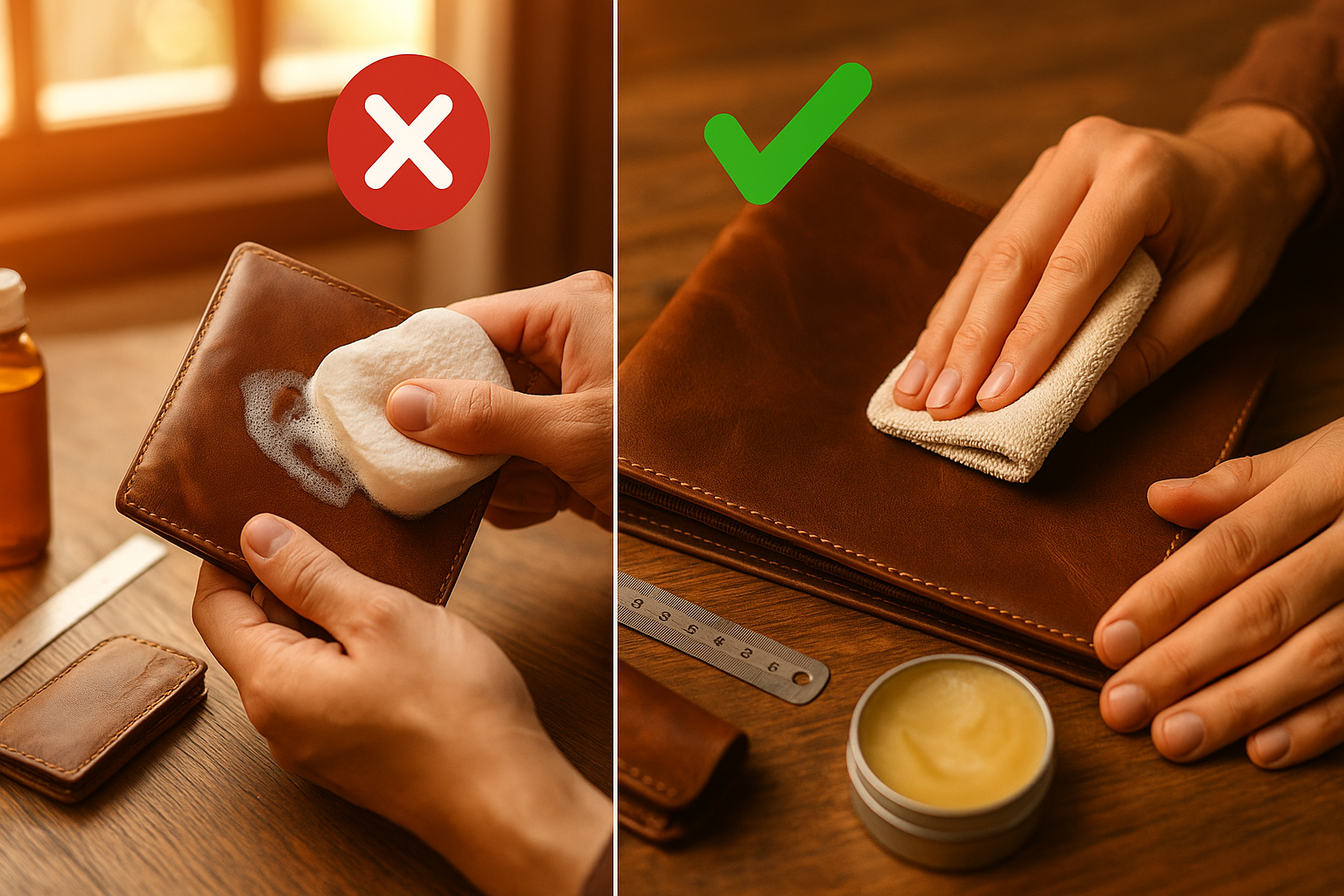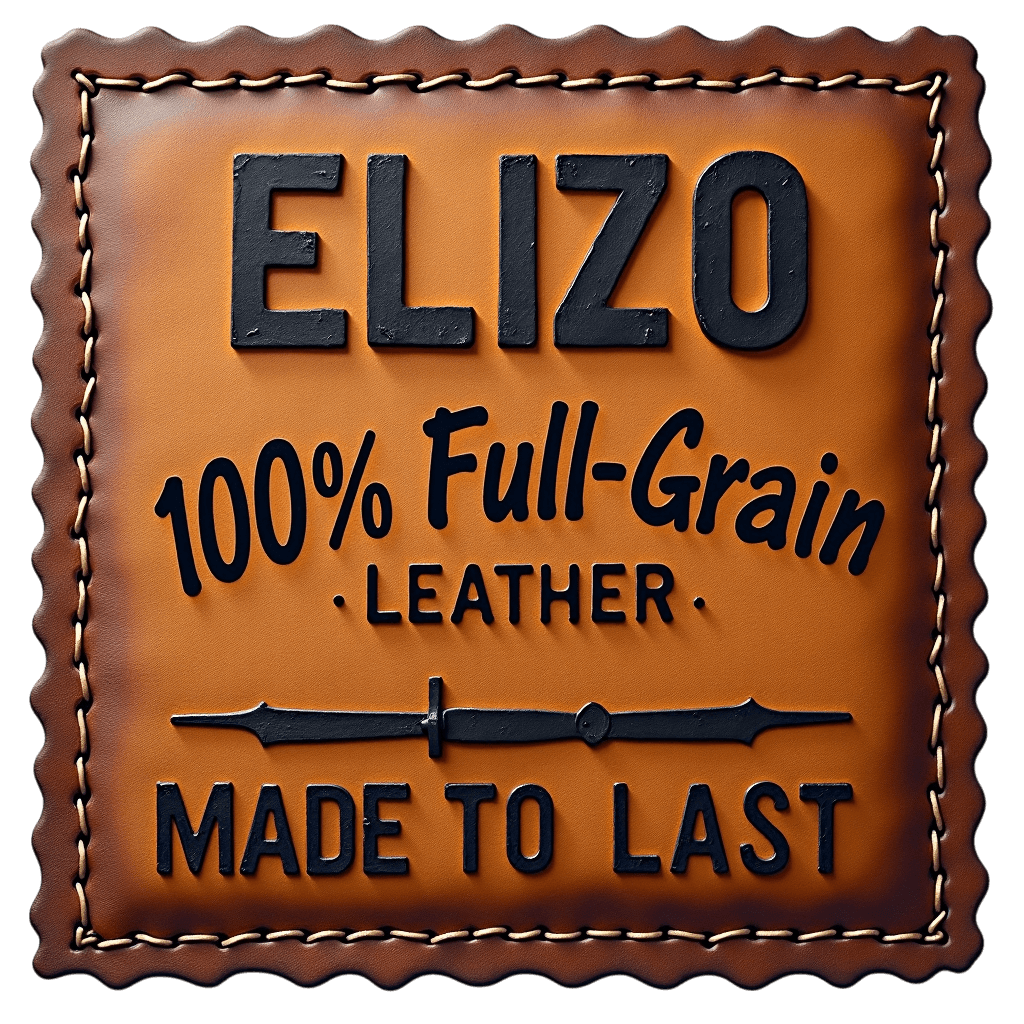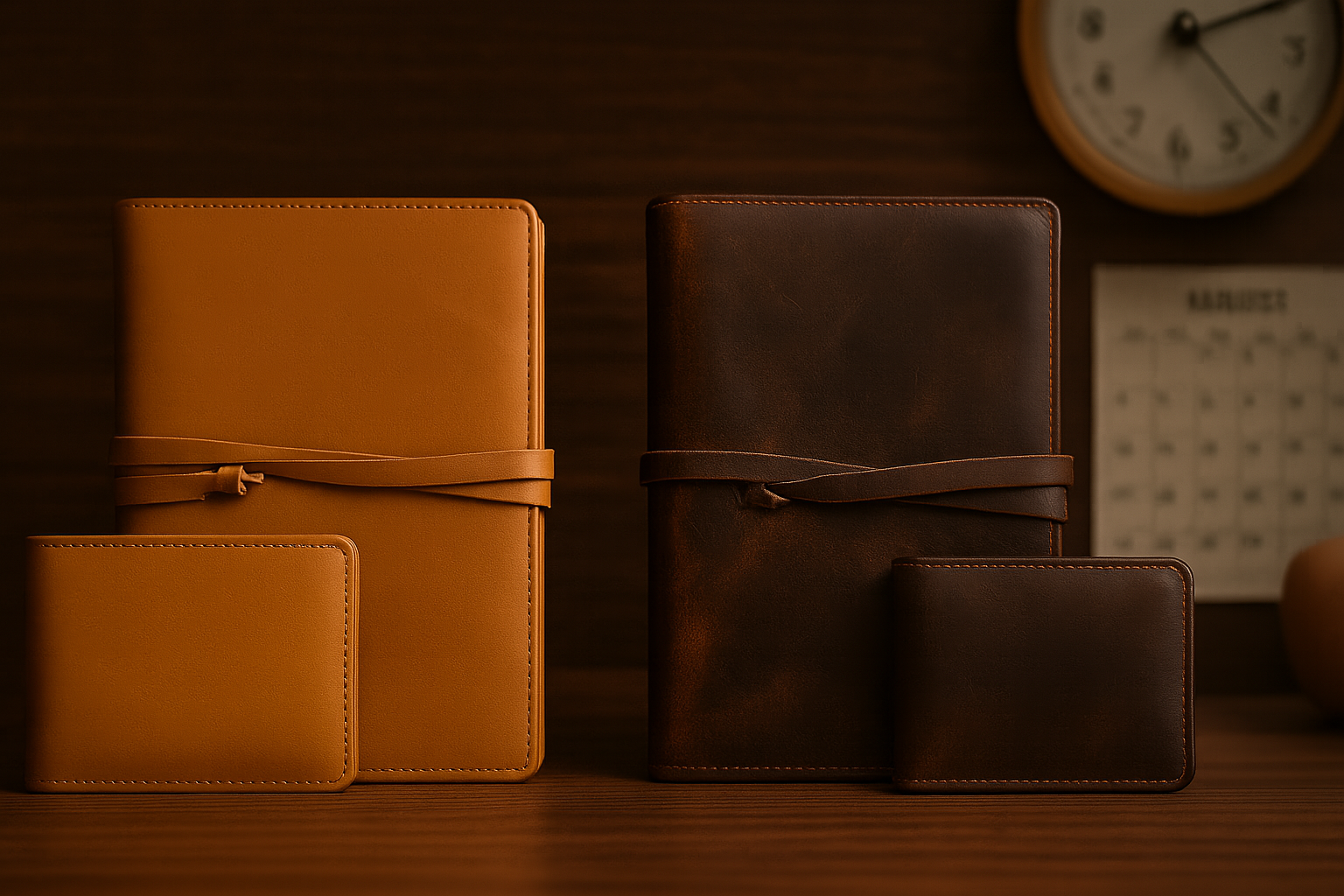
Leather Care Myths Debunked: Separating Fact from Fiction in Leather Maintenance

Leather care advice often contains well-intentioned but potentially harmful misconceptions that can damage quality leather goods while appearing to provide helpful guidance. Distinguishing between scientifically sound care practices and persistent myths helps leather owners make informed decisions that preserve their investments while avoiding common mistakes that can compromise appearance and durability.
Understanding the science behind leather care reveals why certain traditional recommendations can actually harm leather while explaining the reasoning behind proper maintenance techniques. Whether caring for a premium briefcase or maintaining a daily carry wallet, evidence-based care approaches ensure longevity while debunking misconceptions that persist despite contradicting material science and professional experience.
The Origins of Leather Care Misconceptions
Many leather care myths originated from historical practices that made sense with older tanning methods and materials but prove counterproductive or harmful when applied to modern leather goods and contemporary leather processing techniques.
Historical Context and Modern Relevance
Traditional leather care practices developed for working leathers and utilitarian applications often emphasized durability over appearance while modern premium leather goods require different approaches that balance preservation with aesthetic maintenance.
Regional and cultural variations in leather care created diverse practices while globalization has spread techniques without considering their appropriateness for different leather types and quality levels throughout diverse application contexts.
Marketing claims and product positioning have perpetuated misconceptions while commercial interests sometimes prioritize sales over appropriate care guidance throughout consumer education and product promotion.
Misunderstanding Leather Science
Limited understanding of leather chemistry leads to misapplication of care products while scientific knowledge about protein fibers, tanning agents, and oil interactions reveals more effective maintenance approaches.
Oversimplification of complex leather characteristics creates one-size-fits-all recommendations while different leather types require adapted care approaches based on their specific processing and structural properties.
Confusion between leather types leads to inappropriate care while understanding distinctions between full-grain, corrected-grain, and specialty leathers guides proper maintenance selection and application techniques.
Myth 1: "All Leather Needs Regular Oiling"
Perhaps the most pervasive leather care myth suggests that frequent oil application benefits all leather types, when excessive oiling can actually damage modern leather goods while providing unnecessary treatment that compromises structure and appearance.
The Reality of Oil Requirements
Modern full-grain leather goods contain sufficient natural oils from tanning processes while additional oil application should address specific dryness rather than following arbitrary schedules that can lead to over-treatment.
Quality leather naturally regulates oil content while excessive application can cause darkening, softening, and structural compromise that diminishes both appearance and functionality throughout inappropriate care practices.
Professional assessment of oil needs based on leather condition provides better guidance than calendar-based schedules while preventing over-treatment that can cause permanent damage to premium leather goods.
When Oil Application is Actually Harmful
Finished leathers with protective coatings can be damaged by oil penetration while surface treatments prevent absorption and can cause uneven appearance or coating failure throughout inappropriate maintenance attempts.
Colored leathers may experience dye bleeding or color alteration while oil application can disrupt pigment stability and create permanent appearance changes that compromise aesthetic appeal and investment value.
Excessive oil application attracts dirt and contaminants while creating surfaces that collect environmental pollutants and accelerate soiling throughout daily use and environmental exposure.
Myth 2: "Household Products Make Good Leather Cleaners"
The misconception that common household items provide effective leather cleaning leads to damage from inappropriate pH levels, harsh chemicals, and unsuitable formulations that can permanently compromise leather integrity.
Dangers of Improvised Cleaning Solutions
Soap and detergent formulations designed for fabrics or general cleaning contain chemicals that can strip natural oils while disrupting leather fiber structure and causing cracking or hardening throughout inappropriate cleaning attempts.
Vinegar and acidic solutions can damage tanning agents while altering leather chemistry and causing structural weakness that compromises durability and appearance throughout acid exposure and chemical disruption.
Alcohol-based cleaners can cause rapid drying while removing essential oils and causing cracking or surface damage that requires professional restoration to address throughout inappropriate solvent exposure.
Why Specialized Products Matter
Professional leather cleaners maintain appropriate pH levels while providing effective cleaning without disrupting leather chemistry or structural integrity throughout proper maintenance and care applications.
Formulated cleaners include conditioning agents while providing cleaning action that supports leather health rather than compromising structure and appearance throughout professional-grade maintenance approaches.
Quality control and testing ensure compatibility while professional products undergo evaluation for safety and effectiveness that household alternatives cannot provide throughout development and manufacturing processes.
Myth 3: "Leather Should Always Be Kept Dry"
The extreme interpretation of moisture protection leads to over-drying that can cause more damage than controlled humidity while appropriate moisture levels support leather health and longevity.
Understanding Moisture Balance
Leather requires optimal moisture content for flexibility while excessive dryness causes cracking and brittleness that compromises both structure and appearance throughout environmental exposure and storage conditions.
Natural leather breathes and adapts to humidity while completely dry environments can cause fiber damage and premature aging that reduces lifespan and functionality throughout improper environmental control.
Moisture balance supports natural oils while proper hydration maintains leather flexibility and prevents damage from environmental extremes throughout appropriate humidity management and care practices.
When Moisture Control Goes Too Far
Excessive desiccation damages leather fibers while over-zealous moisture prevention can cause more harm than reasonable environmental exposure throughout misguided protection efforts and improper storage conditions.
Sealed storage without air circulation creates different problems while preventing natural moisture exchange that supports leather health throughout appropriate environmental management and storage practices.
Climate-controlled extremes may be unnecessary while moderate environmental conditions typically provide adequate protection without requiring extreme measures that can complicate rather than improve leather preservation.
Myth 4: "Expensive Products Are Always Better"
Price does not guarantee effectiveness while understanding product formulation and appropriate application provides better results than assuming cost correlates with quality or suitability for specific leather types.
Evaluating Product Value
Effective leather care depends on appropriate formulation while premium pricing may reflect marketing, packaging, or brand positioning rather than superior performance or material quality throughout product evaluation and selection.
Simple, well-formulated products often outperform complex alternatives while understanding ingredient lists and intended applications guides better selection than price-based assumptions throughout care product evaluation.
Professional recommendations based on leather type provide better guidance while expert knowledge about specific applications offers more value than price-based selection throughout informed care decisions.
Understanding Product Marketing
Marketing claims may emphasize features that sound impressive while practical effectiveness depends on scientific formulation and appropriate application rather than promotional language throughout product evaluation and selection.
Brand reputation should be balanced with product suitability while established names may not always offer the best solution for specific leather types and care requirements throughout professional assessment.
Independent testing and professional evaluation provide better guidance while objective assessment offers more reliable information than marketing materials throughout informed decision-making processes.
Myth 5: "Breaking In Leather Requires Harsh Treatment"
Aggressive break-in methods can permanently damage leather while proper conditioning and gradual use provide better results without compromising structural integrity or long-term durability.
Gentle Break-In Approaches
Quality leather naturally softens with use while patience and appropriate conditioning provide better results than forcing flexibility through harsh treatment that can cause damage throughout break-in processes.
Professional conditioning products accelerate natural break-in while supporting leather health and preventing damage that aggressive methods can cause throughout initial use and adaptation periods.
Gradual loading and progressive use allow natural adaptation while respecting leather limitations and ensuring long-term performance throughout appropriate break-in management and care practices.
Risks of Aggressive Methods
Forced stretching can cause fiber damage while excessive pressure or manipulation may create permanent weakness that compromises durability throughout inappropriate break-in attempts and misguided acceleration efforts.
Heat application to accelerate softening can damage leather structure while thermal treatment may cause shrinkage, cracking, or other permanent damage throughout inappropriate processing and treatment applications.
Chemical softening agents may compromise leather integrity while harsh treatments can alter material properties and reduce lifespan throughout aggressive break-in methods and inappropriate chemical application.
Myth 6: "All Leather Ages the Same Way"
Different leather types exhibit distinct aging characteristics while understanding these variations helps set appropriate expectations and guide care approaches for optimal results throughout ownership periods.
Leather Type Variations
Full-grain leather develops dramatic patina while maintaining structural integrity through natural aging processes that enhance rather than diminish appearance throughout extended ownership and proper care.
Corrected-grain leathers show minimal aging while protective finishes prevent natural patina development in favor of consistent appearance throughout extended use and environmental exposure.
Exotic leathers require specialized understanding while unique characteristics demand adapted care approaches that respect material properties throughout appropriate maintenance and aging management.
Aging Expectation Management
Realistic aging expectations prevent disappointment while understanding material capabilities guides appropriate care and usage patterns throughout ownership periods and character development.
Professional guidance for specific leather types provides better information while expert knowledge helps optimize aging outcomes and prevent damage throughout informed care decisions and maintenance practices.
Documentation and observation support learning while tracking aging progression helps refine care approaches and understand individual leather characteristics throughout ownership experiences.
Myth 7: "Waterproofing is Always Beneficial"
Universal waterproofing recommendations ignore leather type variations while inappropriate treatment can damage certain leathers and compromise their natural characteristics and performance capabilities.
When Waterproofing Helps and Hurts
Working leathers benefit from water protection while dress leathers may be damaged by treatments that interfere with natural breathability and appearance characteristics throughout inappropriate protection attempts.
Surface treatments can prevent natural aging while blocking the processes that create desirable patina development and character formation throughout protective treatment applications.
Professional assessment determines appropriate protection while understanding leather type and intended use guides waterproofing decisions throughout informed protection planning and application processes.
Understanding Protection Trade-offs
Water protection may reduce breathability while understanding the balance between protection and natural leather characteristics guides appropriate treatment decisions throughout care planning and application.
Appearance changes from protection treatments require consideration while accepting aesthetic modifications may be necessary for enhanced durability throughout protection versus appearance decision-making.
Reversibility and modification options provide flexibility while understanding treatment permanence guides decision-making throughout protection planning and long-term care strategies.
Myth 8: "Storage Doesn't Affect Leather Condition"
Improper storage can cause significant damage while environmental control and protection measures significantly impact leather longevity and condition throughout ownership periods and seasonal storage.
Storage Environment Impact
Temperature and humidity extremes damage leather while controlled environments support preservation and prevent deterioration throughout extended storage periods and seasonal protection.
Air circulation prevents mold and mildew while sealed storage can create moisture problems that damage leather and compromise structural integrity throughout inappropriate storage conditions.
Light exposure during storage can cause fading while UV protection helps preserve color and prevents degradation throughout long-term storage and environmental protection.
Proper Storage Techniques
Shape preservation during storage prevents permanent deformation while appropriate support maintains structural integrity and appearance throughout extended storage periods and seasonal protection.
Dust protection without sealing provides optimal preservation while breathable covers prevent contamination without creating moisture problems throughout appropriate storage protection and environmental management.
Periodic inspection during storage identifies developing issues while early intervention prevents major problems and supports preservation throughout proactive storage management and monitoring.
Myth 9: "Professional Care is Unnecessary"
The belief that all leather care can be handled at home ignores the complexity of restoration and specialized treatment while professional services provide capabilities that exceed home care limitations.
When Professional Care is Essential
Structural damage requires professional assessment while expert evaluation and repair capabilities exceed home care options throughout complex restoration and specialized treatment requirements.
Valuable items benefit from professional maintenance while expert care helps preserve investment value and prevent damage throughout specialized maintenance and preservation services.
Stain removal and restoration often require professional expertise while specialized knowledge and equipment provide solutions beyond home care capabilities throughout complex treatment and restoration processes.
Professional vs. Home Care Boundaries
Routine maintenance can be handled at home while understanding care limitations helps identify when professional intervention becomes necessary throughout appropriate care planning and service utilization.
Preventive care reduces professional service needs while appropriate home maintenance extends time between professional treatments throughout cost-effective care planning and maintenance scheduling.
Professional guidance improves home care while expert advice helps optimize routine maintenance and prevent problems throughout informed care decisions and technique development.
Evidence-Based Care Principles
Scientific understanding of leather chemistry and structure provides the foundation for effective care while evidence-based approaches ensure optimal results and prevent damage throughout informed maintenance practices.
Understanding Leather Science
Protein fiber structure determines care requirements while understanding leather composition guides appropriate treatment selection and application throughout scientific care approaches and material knowledge.
Tanning chemistry affects care needs while different processing methods require adapted maintenance approaches throughout specialized care planning and treatment selection.
Environmental interaction science explains aging and damage while understanding these processes supports prevention and optimization throughout informed care decisions and maintenance planning.
Professional Recommendations
Expert guidance based on material science provides reliable care information while professional knowledge supports optimal maintenance and prevents damage throughout informed care decisions and technique development.
Industry standards and testing support care recommendations while established protocols provide proven approaches throughout professional care guidance and technique validation.
Continuous learning and adaptation improve care practices while staying current with developments supports optimal maintenance throughout evolving care knowledge and technique advancement.
Building Reliable Care Knowledge
Developing accurate understanding of leather care requires critical evaluation of information sources while building knowledge from reliable experts and scientific understanding rather than popular misconceptions.
Evaluating Care Information
Source credibility affects information reliability while professional expertise and scientific backing provide better guidance than popular opinion throughout information evaluation and care education.
Testing and verification support care decisions while understanding the basis for recommendations helps evaluate their appropriateness throughout informed care planning and technique selection.
Professional consultation provides personalized guidance while expert assessment of specific leather types and conditions supports optimal care throughout specialized maintenance and treatment planning.
Continuing Education and Improvement
Learning from experience improves care practices while observation and documentation support technique development throughout ongoing care education and skill advancement.
Professional development and training provide advanced knowledge while specialized education supports optimal care for valuable leather goods throughout career development and expertise advancement.
Community learning and sharing support care knowledge while collaboration with experts and enthusiasts provides diverse perspectives throughout care education and knowledge development.
Conclusion: Embracing Science-Based Leather Care
Separating leather care facts from fiction requires understanding material science while evidence-based approaches ensure optimal results and prevent damage throughout informed maintenance practices and care decisions.
Quality leather accessories deserve care based on accurate knowledge while rejecting harmful myths protects investments and ensures longevity throughout proper maintenance and preservation practices.
Whether maintaining a leather desk pad for professional use or caring for a travel duffle bag, scientific understanding guides optimal care while preventing damage from well-intentioned but misguided practices.
Remember that effective leather care combines scientific knowledge with practical experience while professional guidance helps navigate complex care decisions and optimize maintenance throughout ownership periods.
Choose care approaches based on evidence and expertise while rejecting myths that can damage valuable leather goods and compromise their longevity and appearance throughout informed maintenance and preservation practices.
For accurate information about caring for specific types of leather goods, consult professional sources and understand the science behind effective maintenance while avoiding harmful misconceptions that persist despite contradicting established knowledge and best practices.



